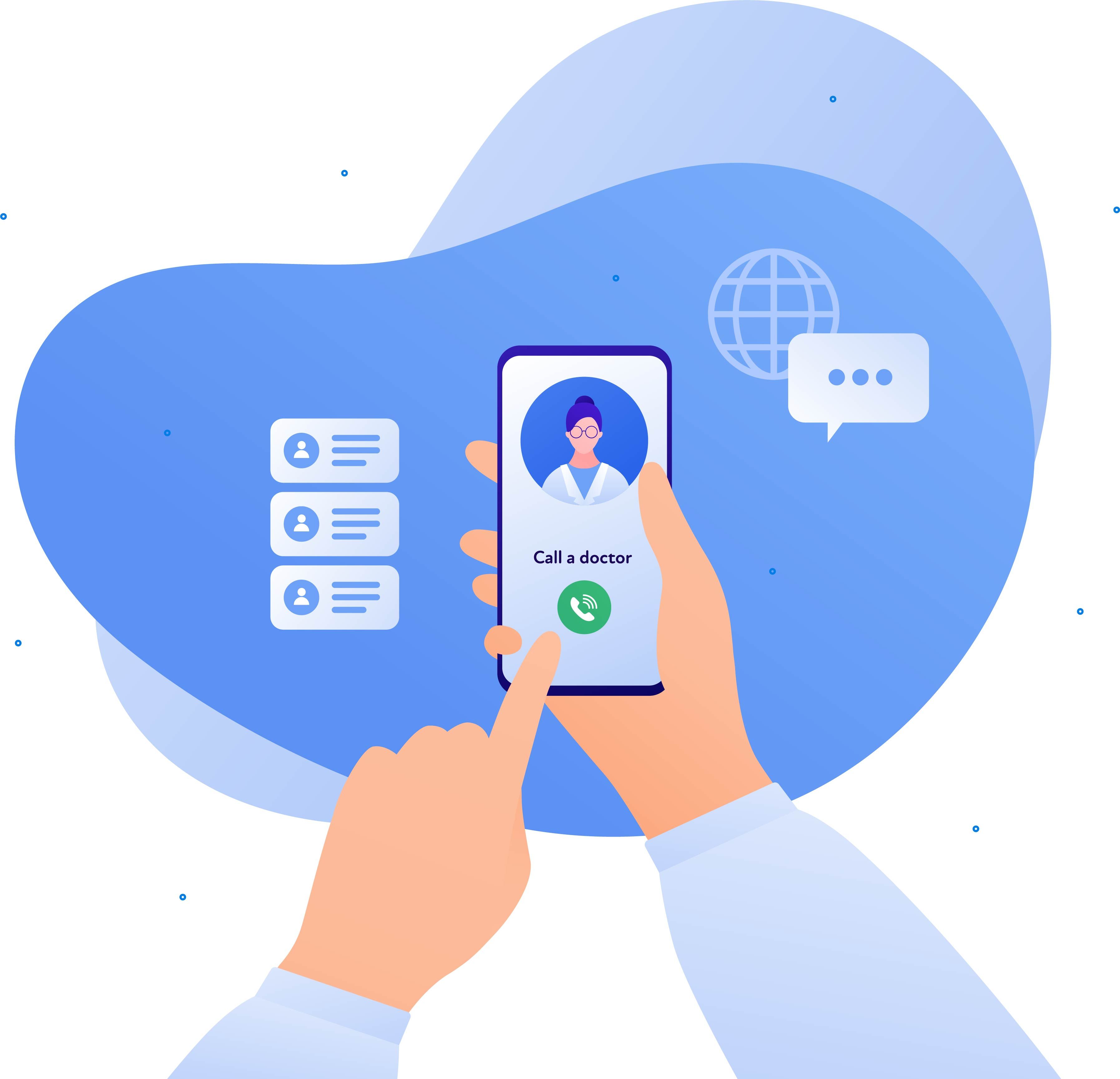Article
Increasing Access to Quality Mental Health Care Through Telepsychiatry
Author(s):
43 of 50 states are experiencing a severe shortage in psychiatrists specializing in child and adolescent care. Telehealth may be able to help.
tasty_cat/AdobeStock

The United States has been experiencing a critical shortage in access to mental health for years now. According to a 2018 study from the National Council for Mental Wellbeing, 38% of Americans seeking care had to wait longer than a week for necessary mental health treatments, and 46% either knew someone who had to drive an hour round trip to seek treatment or had experienced that challenge themselves.1
These challenges go hand in hand with our ongoing national psychiatrist shortage. According to the National Council for Mental Wellbeing’s exhaustive 2017 report, by 2025, between 6090 and 15,600 additional psychiatrists would need to be added to the workforce to meet projected demand.2 Those statistics could paint an even more drastic picture when taking into account the national mental health crisis brought on by the COVID-19 pandemic—particularly its effect on children.
Current Inequities in High-Quality Care Access
The current state of behavioral health boils down to this: we are in a crisis of access to care. However, while demand for care exceeds workforce supply nationwide, there are communities and specific demographics that are disproportionately impacted by access issues. The National Council report on the shortage found that 55% of counties across the US had no current practicing psychiatrists, and 43 of 50 states experienced a severe shortage in psychiatrists specializing in child and adolescent care.2
Currently, the system is so overwhelmed that patients have to wait months to access a clinician. While rural areas are still especially underserved, areas with an abundance of mental health practitioners have also been overwhelmed during the pandemic. This situation can be discouraging for families because when they do reach out for care, they do not get called back—or they do not know who to call.
COVID-19’s Impact on Children’s Mental Health
According to the American Academy of Pediatrics, 1 in 5 children or adolescents in the US have a diagnosable mental illness that requires some form of intervention or treatment. This situation has been highlighted and exacerbated during the pandemic, which introduced new, long-term stressors into the lives of many children and families. Whether due to socioeconomic losses during the pandemic, stressors of in-home schooling, or added stressors on caretakers trying to adjust to a new normal, COVID-19 magnified existing mental health vulnerabilities.
Children have been particularly vulnerable in this environment because they lost the structure and routine of school. Suddenly, they did not have school counselors, teachers, or coaches available to them as a support system. The isolation resulting from this shift drastically increases the risk of depression and anxiety—even up to 9 years after the fact.3 Additionally, studies have found the duration of loneliness has a larger impact on children than the intensity, making the 14+ months of school closures a significant mental health challenge for children.
During 2020, we also experienced an increase in acuity of need among children. Many children and families are in crisis and are overwhelming pediatrician’s offices, or they are taking to emergency departments (EDs) as a last resort for treatment. According to the Centers for Disease Control and Prevention, mental health-related ED visits for children aged 5 to 11 and 12 to 17 increased by 24% and 31%, respectively.4 See the Figure for more information.
Figure. Weekly Number of Emergency Department (ED) Mental Health-Related Visits (A) and Proportion of (B) Children’s Mental Health-Related ED Visits per Total ED Visits* Among Children Aged < 18 Years5

It is also important to note that, even before the COVID-19 pandemic, depression and anxiety diagnoses for children have been on the rise—with the percentage of children aged 6 to 17 diagnosed with anxiety or depression growing from 5.4% in 2003 to 8.4% in 2012.5
How Telehealth Can Help Support Children
Telehealth is directly helping the access issue by reaching many of those underserved areas that do not have behavioral health providers available to support their demand. There are many areas that would be forced to go without providers if it were not for telehealth.
Now, as we move forward, more Americans not only have had direct experience with telehealth—but in many cases, they prefer it to in-person care. The American Psychiatric Association recently released a poll demonstrating that nearly 60% of Americans would use telehealth for mental health services.6 As a result of patients adapting to a more virtual world during COVID, telehealth (specifically for mental health) is more mainstream and comfortable for patients than ever before.
Telehealth was a lifeline for so many during the pandemic that providers now understand they can deliver high-quality care through this methodology. The opportunity is there for organizations to continue to recruit providers who can reach some of the underserved in this manner.
What Patients Can Expect From Telehealth Visits
Although more patients and families are familiar with telehealth now than ever before, it is important for providers to set parameters with the families first in terms of expectations for telehealth visits. In practice, telehealth appointments should operate as close to a standard in-person visit as possible. However, these are some best practices to ensure the visit is successful: 1) the appointment should be confidential and in a secure location, 2) providers should confirm the patient’s location and ensure they have a secondary plan in place if the telehealth connection is lost at any point during the appointment, and 3) providers should expect to spend more time building rapport with the child, particularly if it is an initial appointment.
Because of the pandemic, a lot of families are starting with the pediatrician’s office. Many pediatricians still have dedicated clinicians running telehealth appointments. There are also providers that patients and families can access through more dedicated mental health organizations, like Community Mental Health Centers (CMHCs) or Federally Qualified Health Centers (FQHCs) that have behavioral health programs. CMHCs and FQHCs also generally accept Medicare and Medicaid, so if a particular patient is not on private insurance, these organizations are good options for access to mental health services.
Potential Limitations for Using Telehealth for Children
While telehealth is as effective as in-person care in many cases, there are certain scenarios where it may not be the best fit for a patient or family.
For example, if the patient is younger than 6 years old, it may be more challenging to get them to engage virtually. Then, for some patients on the autism spectrum who need applied behavioral analysis as part of their treatment, telehealth may not be the best course of action.
For more rural communities that have persistent challenges with broadband, COVID-19 helped open up regulations around audio-only appointments as a lifesaving option (before COVID, many individuals in those communities would have to go without care). However, audio-only appointments can pose particular challenges with children, especially younger children, who are not able to verbalize their feelings and emotions effectively over the phone. That is where organizations or providers might see the advantage of having the virtual platform through a centralized location, like a pediatrician’s office or a clinic that has a well-established connection. In this case, telehealth can be an effective tool for organizations to hire psychiatrists who are not necessarily from their communities, but who can adequately serve their patient populations.
Case Example
“Thomas” is a 10-year-old patient who experiences difficulties with depression and social isolation. As a native Spanish speaker in a rural Texas community, Thomas needed a bilingual psychiatrist with whom he could have regular appointments to build a relationship and get the treatment he needed.
Thomas and his family sought out a CMHC that covers 9 counties in central Texas. This CMHC had recently begun utilizing a telepsychiatry partner to expand its services. That partnership decreased their 9-month wait time for an appointment to 2 months, which allowed Thomas’s family to get their son the care he needed.
Concluding Thoughts
As we look forward to a future where telehealth plays a much more significant role in long-term mental health care, it is important to think creatively about where we can insert telehealth services to make the biggest impact on children. The next steps to building a better system through virtual care may include incorporating telepsychiatry appointments into schools; increased partnership between health care organizations and formal telepsychiatry organizations who can help them access nonlocal providers to address their community needs; and making referral resources readily available for patients and families looking to get their child seen by a high-quality psychiatrist.
The most important thing practitioners and health care organizations can do right now is continue thinking about ways to increase access. It is crucial that mental health services do not move backward and, instead, embrace virtual care as integral to their future operations.
Dr Mullare is a double-boarded psychiatrist with nearly 20 years’ experience and is currently the Medical Director of Outpatient Services at Iris Telehealth.
References
1. National Council for Mental Wellbeing. New study reveals lack of access as root cause for mental health crisis in America. News release. October 10, 2018. Accessed September 9, 2021. https://www.thenationalcouncil.org/press-releases/new-study-reveals-lack-of-access-as-root-cause-for-mental-health-crisis-in-america/
2. National Council for Mental Wellbeing, Medical Director Institute. The psychiatric shortage: causes and solutions. March 29, 2017. Accessed September 9, 2021. https://www.thenationalcouncil.org/wp-content/uploads/2017/03/Psychiatric-Shortage_National-Council-.pdf
3. Loades ME, Chatburn E, Higson-Sweeney N, et al. Rapid systematic review: the impact of social isolation and loneliness on the mental health of children and adolescents in the context of COVID-19. J Am Acad Child Adolesc Psychiatry. 2020;59(11):1218-1239.
4. Leeb RT, Bitsko RH, Radhakrishnan L, et al. Mental health-related emergency department visits among children aged <18 years during the COVID-19 pandemic — United States, January 1–October 17, 2020. MMWR Morb Mortal Wkly Rep. 2020;69(45):1675-1680.
5. Centers for Disease Control and Prevention. Data and statistics on children’s mental health. March 22, 2021. Accessed September 9, 2021. https://www.cdc.gov/childrensmentalhealth/data.html
6. American Psychiatric Association. New nationwide poll shows an increased popularity for telehealth services. May 27, 2021. Accessed September 9, 2021. https://www.psychiatry.org/newsroom/news-releases/New-Nationwide-Poll-Shows-an-Increased-Popularity-for-Telehealth-Services






